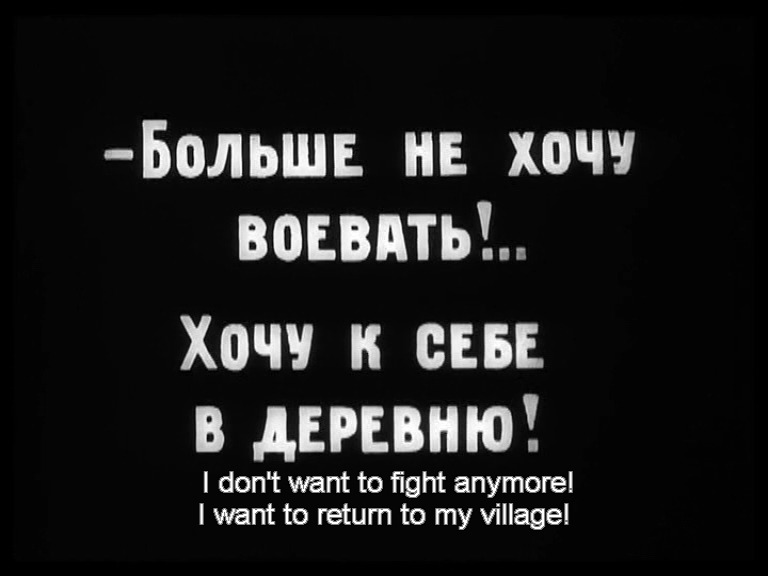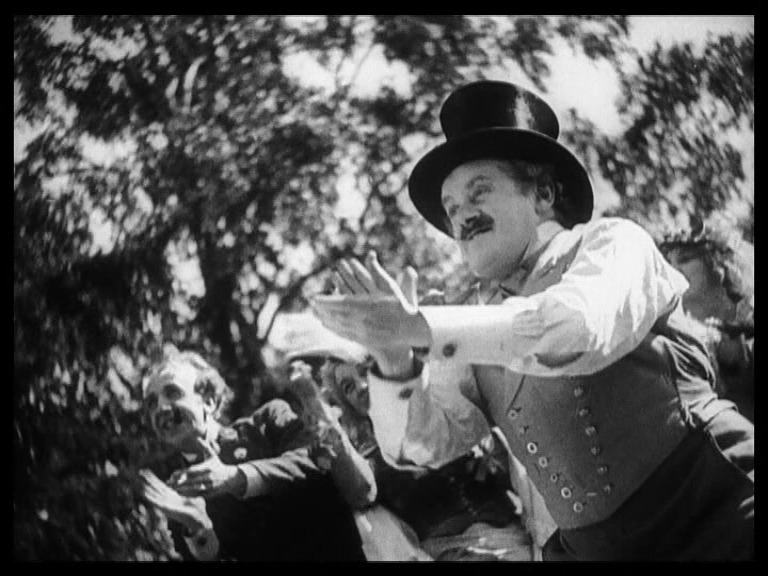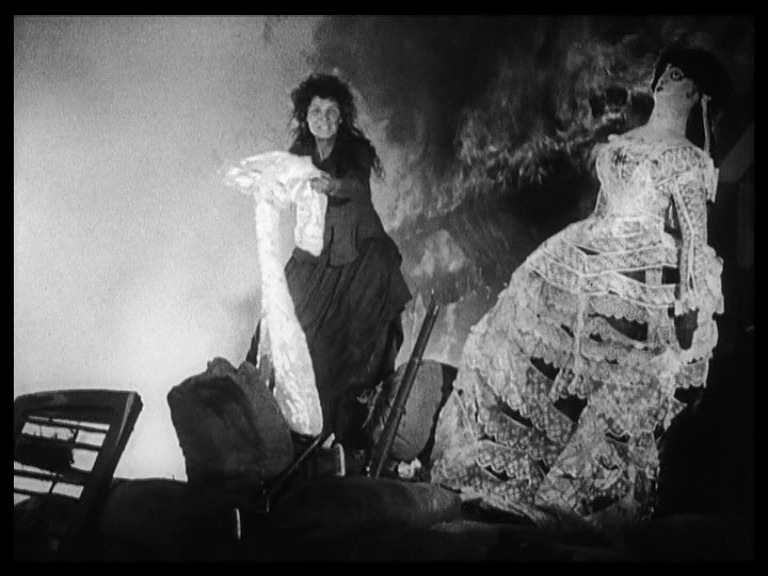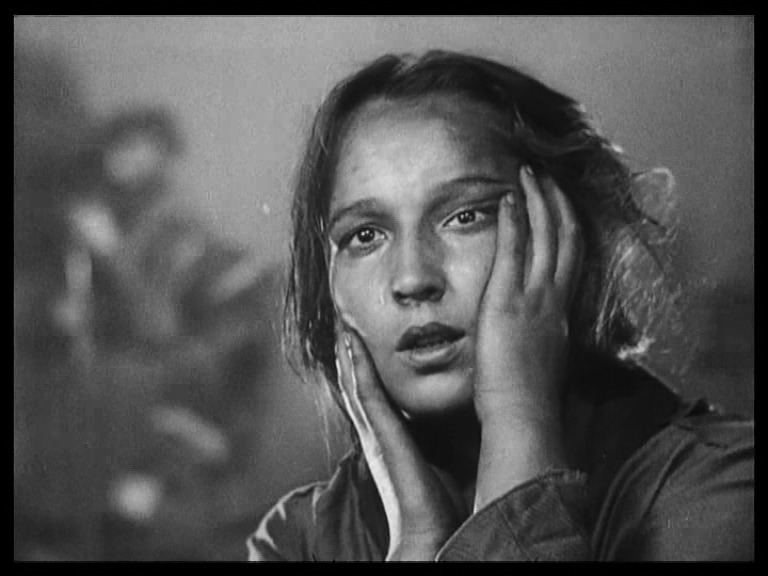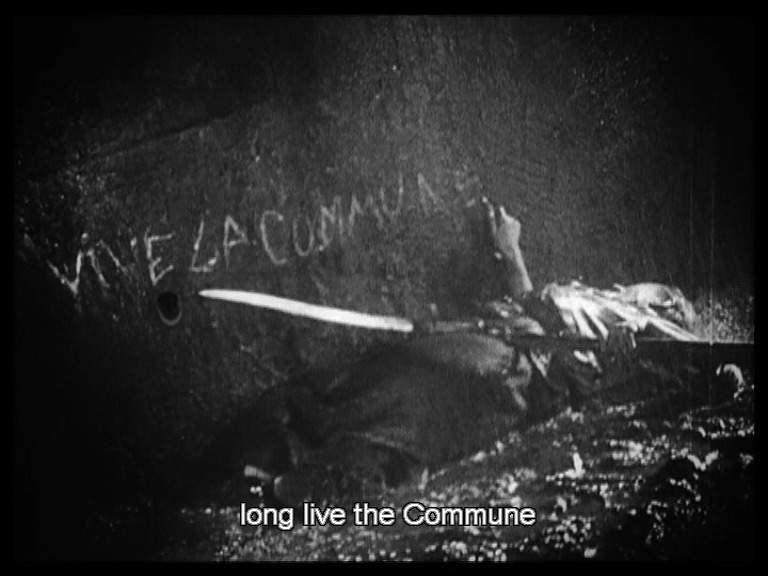![]()
![]()

![]()
![]()
|
Search DVDBeaver |
S E A R C H D V D B e a v e r |

(aka "Novyy Vavilon" )
directed by Grigori Kozintsev & Leonid Trauberg
USSR 1929
|
The New Babylon is a metaphorical clash of glittering surfaces and deep social cynicism that marked the climax of Grigori Kozintsev and Leonid Trauberg's experimentations with the conventions of the Soviet silent cinema. Taking their thematic inspiration from the story of the Paris Commune of 1871, the two directors fashioned a highly conceptualized allegory of social strata under pressure that transcends its historical roots to form a sardonic comment on the human condition. Excerpt from Stephen L. Hanson, from the review at filmreference.com |
Poster
 |
Theatrical Release: 1929
Reviews More Reviews DVD Reviews
DVD Review: Absolut Medien - Region 0 - PAL
| DVD Box Cover |
|
CLICK to order from:
|
| Distribution |
Absolut Medien Region 0 - PAL |
|
| Runtime | 1:33:26 (4% PAL speedup) | |
| Video |
1.33:1 Original Aspect Ratio |
|
| Audio | Silent film with music (Dolby Stereo) | |
| Subtitles | English, French, German, Dutch, none | |
| Features |
Release Information: Studio: Absolut Medien Aspect Ratio:
Edition Details: Chapters 8 |
|
| Comments: |
This is not the first time that the film has
been released on DVD. A 2005 edition by the French publisher Bach Films
presented the film in a 73-minute version with piano accompaniment. This
new German edition from Absolut Medien is 93 minutes, and includes a
recording of the original orchestral score by Shostakovich.
The film is presented in an
interlaced transfer with an aspect ratio of 1.33:1 and has a thin black
border around the entire frame. Despite the inevitable damage in a film
of this age, the image is often surprisingly sharp and detailed, with
pleasing contrast levels and slight grain. Kozintsev and Trauberg
frequently backlight their subjects with great artistry, and the deep
blacks and bright whites in this transfer show this off to advantage. NOTE: Marek Pytel tell us in email: ADDENDUM: Sent in email - Hello, Marek Pytel added a comment saying that "this is not correct". He refers to a longer version of the film which was cut and altered three weeks before the premiere and declares that only the longer version displays the film's "intended structure". The reference is correct. But Mr. Pytel should have added that the
same reference is made and discussed in the booklet of the DVD edition.
Arguing for their choice of the shorter version, the editors refer to a
statement of one the directors, Trauberg, who declared during the 1970s
that the film should not be shown in its longer version, but only in the
shortened version. So the longer version is, without doubt, a version
which everyone interested in the film would like to know; it is,
however, not correct to say that the short version does not exhibit "the
intended structure" of the film. Instead, the editors got a point when
choosing the short version. It's the film which at least one of the
directors wanted to be shown. (thanks Mischa)
Marek Pytel adds in email: "The last minute edit of the film,
resulting in the abridged version to which Mr. St. Aubyn refers, was
made under studio orders given on the 27/8th February 1929 - less than
three weeks before the film's 19th March 1929 premiere. Shostakovich's
score was then not only completed but arranged ready for performance.
The last minute edit - in fact a censorship of the film's perceived
formalism - was forced on the directors after its second, Moscow,
preview and resulted in the well documented fiasco of the 1929 premiere
performances. These went ahead as scheduled, although not as either
Kozintsev, Trauberg, or Shostakovich had intended when submitting their
finished work to the studios just a fortnight or so earlier. |
DVD Menus
|
|
|
|
|
|
Screen Captures
Subtitle sample
|
|
|
|
|
|
|
|
|
|
|
|
|
|







